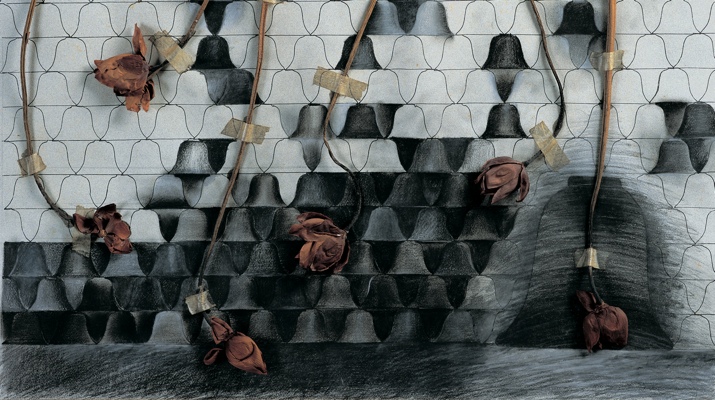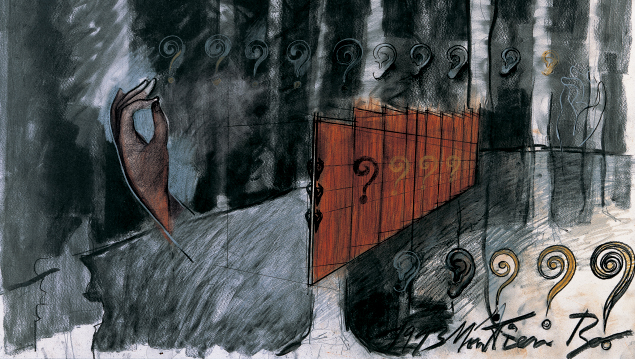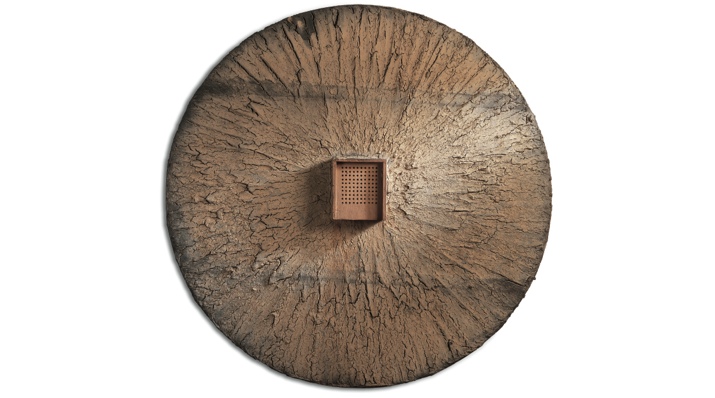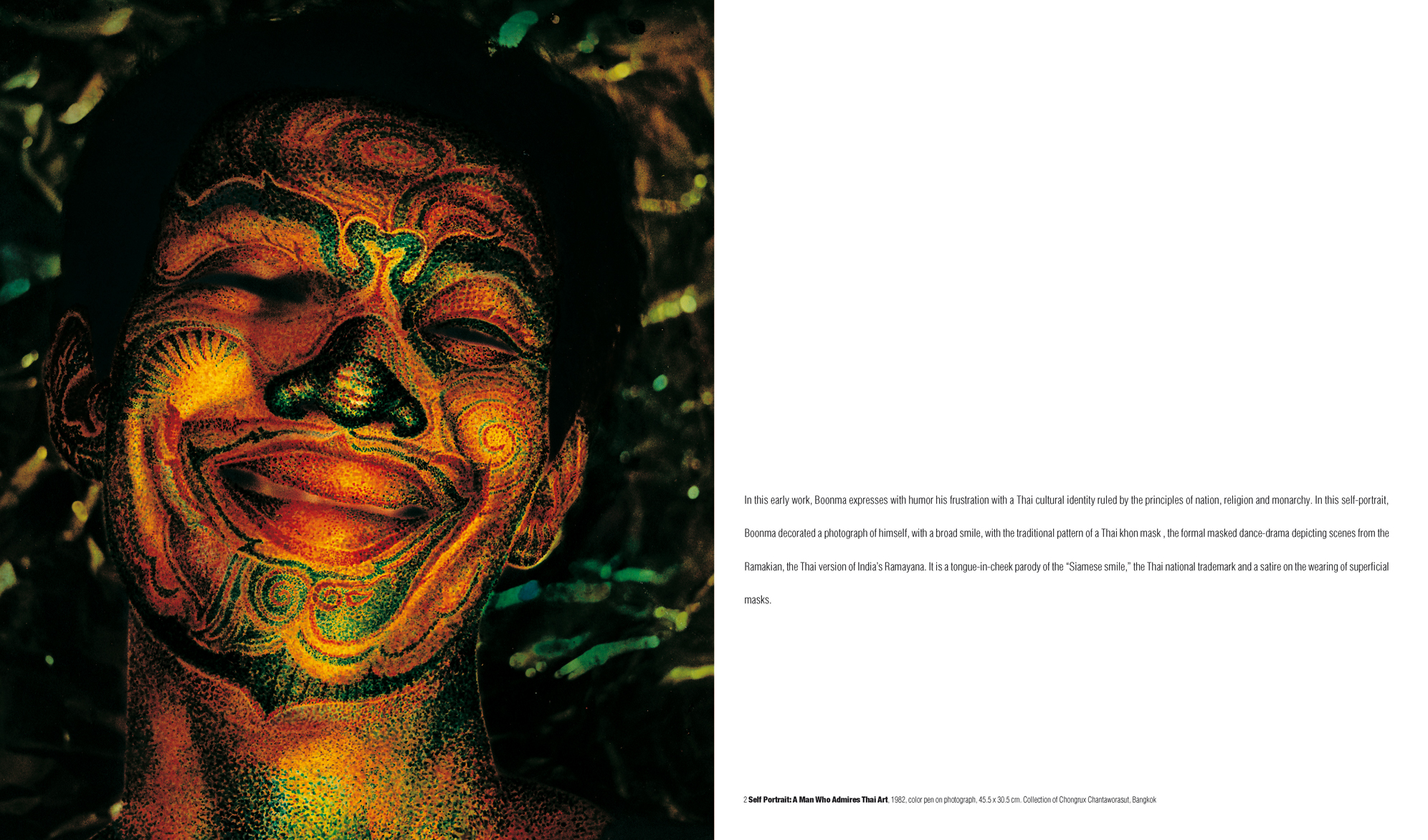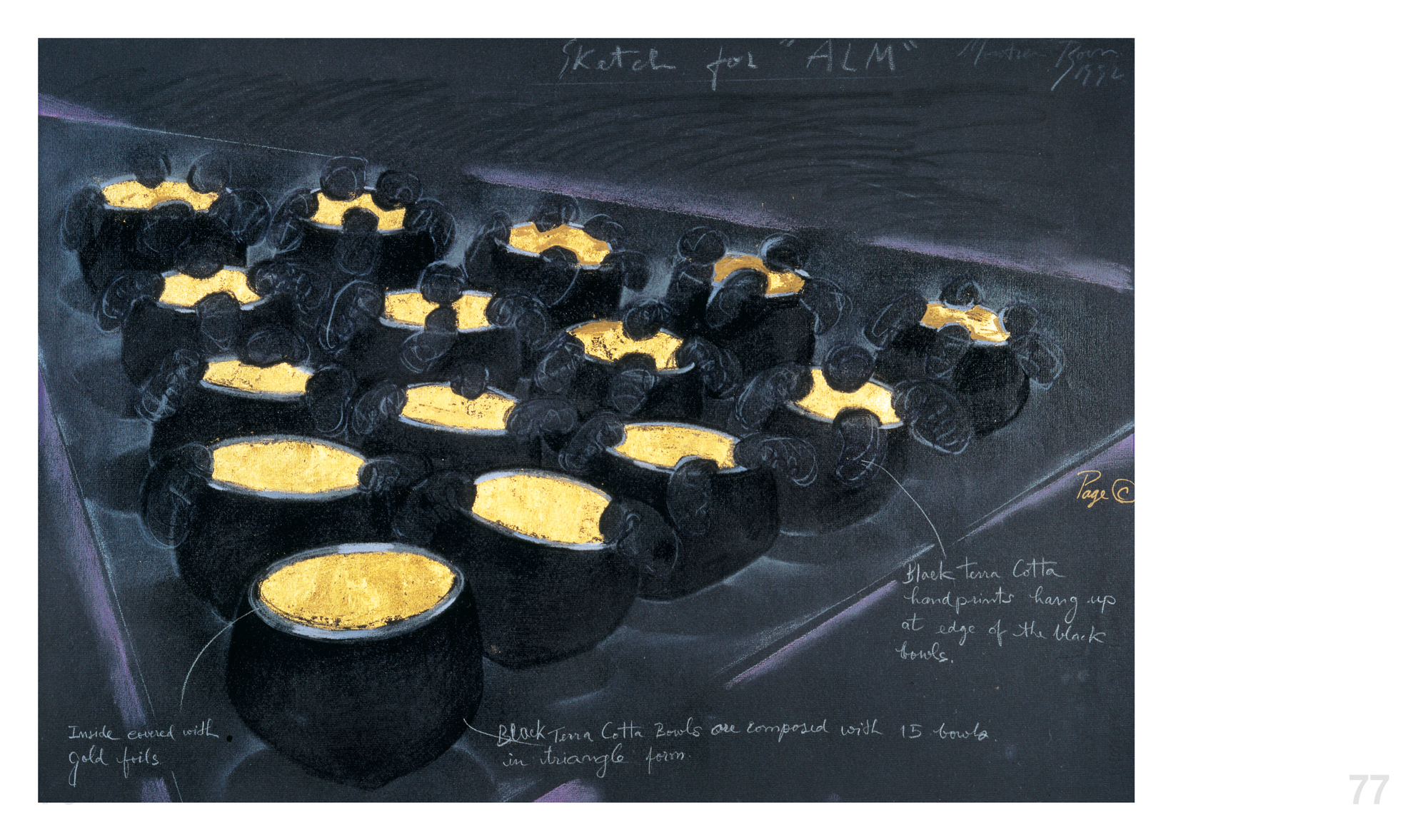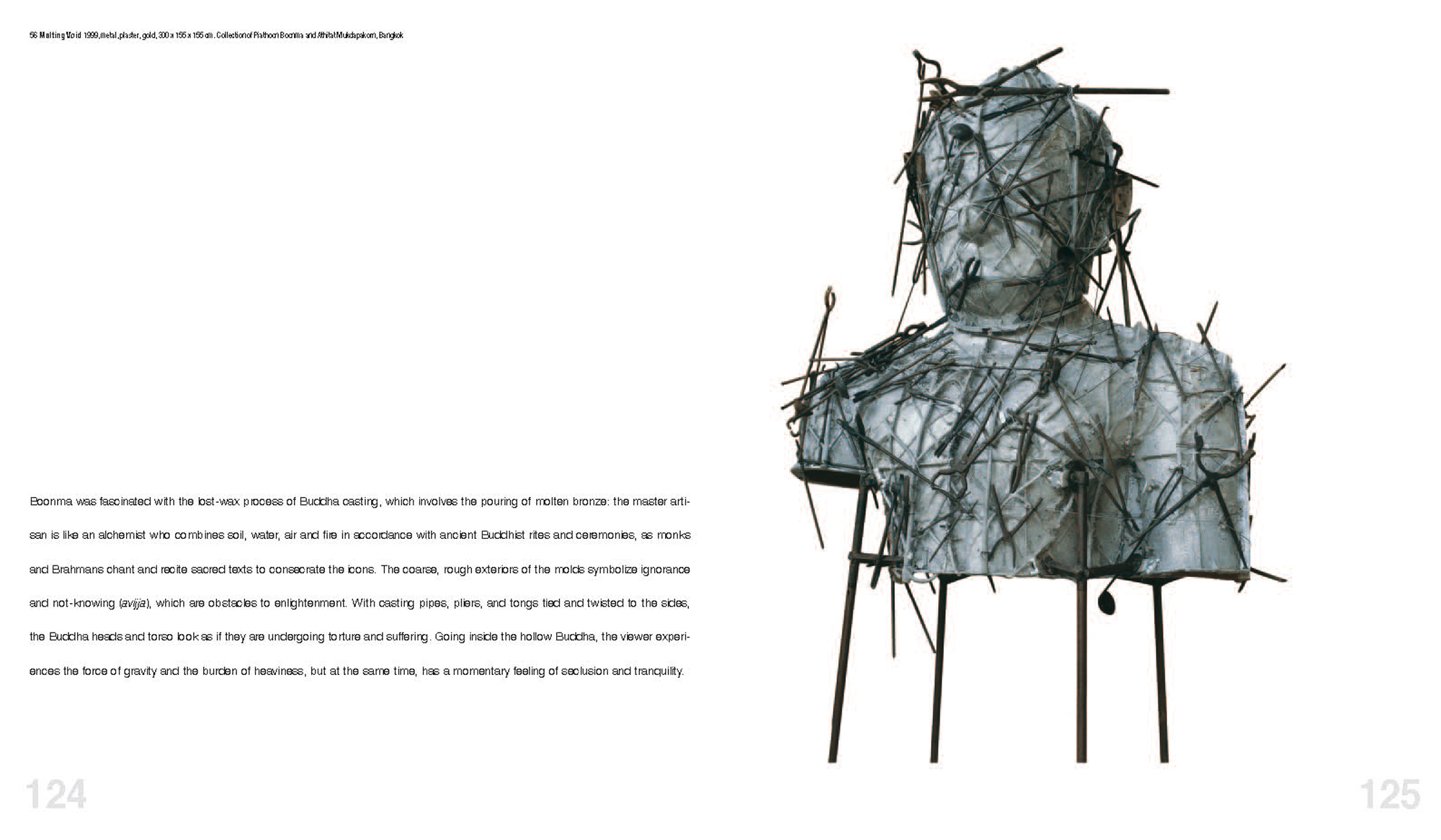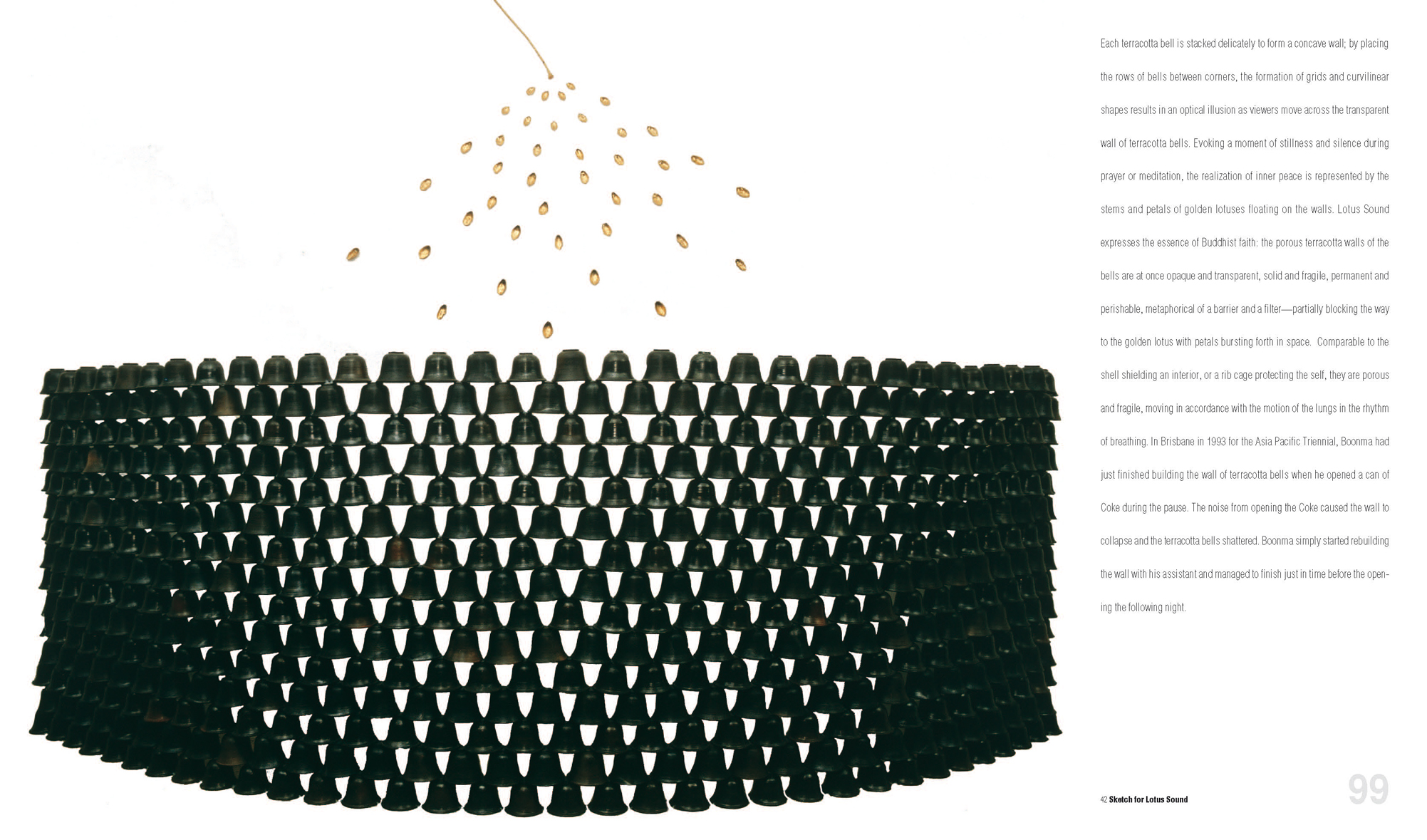Montien Boonma

Montien Boonma
Temple Of The Mind
Apinan Poshyananda
Author
Apinan Poshyananda is an award-winning author, curator, art administrator and professor at Chulalongkorn University in Bangkok.
Contributors
Vishakha Desai, Melissa Chiu and Sulak Sivaraska
Designer
Misha Anikst
OUT OF PRINT
Specification
Published
by Asia Ink and Asia Society 2003
ISBN 978—0953783922
24.2 x 28 cm
Illustrated in colour throughout
Printed in Italy on GardaMatt Art paper
The book was the catalogue for the exhibition:
Montien Boonma: Temple of the Mind, National Gallery of Australia, Canberra, 2004
Montien Boonma: Temple of the Mind, Asia Society, New York, 2003
Montien Boonma (1953—2000) is the face of Buddhism in contemporary art. He explored art as a space of refuge and peace at a time of radical change in Thai society. His inspiration derives from his Buddhist faith and his own spiritual quest, which he communicates to the viewer through drawings, mixed media works, and installations. His contemplative art provides a way of life that is an alternative to the Western idolatry of the ego. Rarely figurative, Boonma uses shapes, forms, and different textures to explore the process of meditation and healing, and to reflect an tragic yet inspirational life in which love, death, and rebirth intertwine. Heeding the warnings of a Buddhist monk who predicted that their love would lead to untold suffering, he and his wife lived apart from the day they were married. Her death from breast cancer inspired some of his most beautiful work. His own premature death in August 2000 marked a great loss to contemporary Asian art.
‘I want the space inside the Buddha image to be a place of refuge for viewers seeking calmness and contentment.’
Montien Boonma
Reviews
Asia Art Archive
Art Asia Pacific Magazine
‘Montien Boonma (1953–2000) was regarded as one of Asia’s most prolific and controversial artists during the emergence of the contemporary Asian art scene in the 1990s. Frequently tagged as a “Buddhist artist,” Boonma defied the canonical teachings of Buddhist art through his experimentation with ephemeral materials (ash, herbs, clay, wax) and artisanal techniques (lost-wax casting, molding and natural pigmentation). By making art a healing process to suppress grief and suffering, Boonma created installations that required viewers to concentrate intensely on their senses of touch, smell, sight and sound.’ Apinan Poshyananda, ‘Montien Boonma: Melting Void/Molds for the Mind,’ Art Asia Pacifica Magazine, May-June 2013
The Bangkok Post
‘A rare behind- the-scenes look at the late great artist is told through his personal collection. Few art enthusiasts have not heard of Montien Boonma, whose highly symbolic work Nature’s Breath: Arokhayasala from the “Temple Of The Mind” exhibition took Asia Society by storm in 2003, a couple of years after his death. Untitled (Funeral March Series), 2000, the large bell-like sculpture with lungs instead of ringers is arguably one of the most distinctive and instantly recognisable pieces of Thai contemporary art, and is a culmination of Montien’s state of mind and physical condition — a personal yearning for healing.’ The making of Montien Boonma,’ The Bangkok Post, 8 May 2013
National Gallery of Australia
‘As one of Asia’s most gifted contemporary artists, Montien Boonma’s death in 2000, at the age of 47, was not only a great loss for Thailand but also for the international art community. His work explores the tensions and transformations between the rural and the urban, the traditional and the modern, and developed and developing countries.’
READ MORE
Thai Art Archives
‘Montien Boonma: Unbuilt/ Rare Works.’ Thai Art Archives, July 2013
READ MORE
Reader Review
‘After undergoing a semester-long research project on this artist for a contemporary art history class, I can confidently say that this is the most comprehensive, helpful source available on the life and work of Montien Boonma.It was also my first introduction to his work, and after having carried the book around for several weeks and referring to it continuously, the artist has become one of my favorites, and one whose example I can only hope to emulate in my own visual work. Lovely full color with innumerable photos of the artist’s work, helpful contextual review… I couldn’t really say better things about this book.’ Kathryn W. Hotler 4 May 2006


